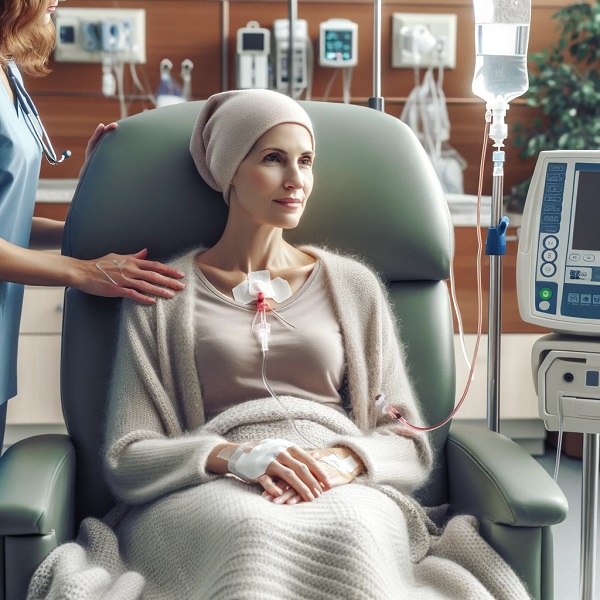
Understanding Cervical Cancer
Kay
- 0
Cervical cancer might sound scary, but once we’ve all got our head around what exactly it is, I think you’ll agree that the more we know, the less scary it becomes, and the better equipped we’ll all feel to deal with it should we find ourselves among those women who find themselves in the situation of needing to. So, here goes: what is cervical cancer, what causes it, what are the symptoms and, most importantly, how is it treated and how can we all avoid getting it ourselves?Let’s start at the very beginning with a quick anatomy lesson. You might already know this, but the cervix, which connects a woman’s womb (uterus) to her vagina, technically counts as a ‘perineum’ as well as a ‘cervix’, and therefore falls within the banner of being a ‘gynecological cancer’.
What is Cervical Cancer?
Cervical cancer begins in the cells that line the cervix: the lower end of the uterus (womb). It is one of the most common cancers in women globally – but it’s also one of the most preventable, thanks to highly effective screening tests and vaccines.
Causes and Risk Factors
So what causes cervical cancer? Well, primarily the human papilloma virus, known commonly as HPV, is what causes the disease. But other things are at work, too.
Human Papillomavirus (HPV) and Cervical Cancer
HPV is short for human papillomaviruses, a family of viruses, with some considered high-risk types that can cause cervical cancer. Most people will get it at some point in their lives, though in most cases it clears on its own. In other cases, the virus won’t go away, and can contribute to cervical cancer.
Other Risk Factors
HPV isn’t the only contributor to risk of cervical cancer; other factors include smoking, immune suppression, long-term history of oral contraceptive use, and history of full-term pregnancy.
Symptoms of Cervical Cancer
There are often no symptoms in the early stages of cervical cancer so screening is vital. When symptoms do occur, they are varied.
Early-Stage Symptoms
In many cases of early-stage cervical cancer – particularly when it first appears – there are no symptoms. If symptoms do arise, they can include unusual vaginal bleeding, such as vaginal bleeding after sex, between periods, or after menopause; watery or bloody vaginal discharge; and pelvic pain.
Advanced-Stage Symptoms
Later stages include difficulty urinating or having a bowel movement, swelling of the legs, and fatigue – all of which should see immediate medical care.
Diagnosis of Cervical Cancer
Detecting cervical cancer early can make a huge difference. Here’s how it’s done.
Screening Tests
Pap Smear
Have you ever had a Pap smear? It is the old-school squish a bush that involves having cells scraped from your cervix so that we can look at them under a microscope and discover a problem early.
HPV Testing
HPV tests detect for certain types of HPV in your cervix, often combined with other tests such as a Pap smear.
Diagnostic Procedures
If screening tests show abnormalities, further diagnostic procedures may be needed.
Colposcopy
The image of the cervix during a colposcopy is taken using a magnifying apparatus. It’s often the next step after a Pap smear. Sometimes during a colposcopy, the doctor removes a cervical biopsy.
Biopsy
A biopsy consists of a small sample of cellular material from the uterine cervix. It is examined under a microscope as a means of diagnosis for cervical cancer.
Stages of Cervical Cancer
Understanding the stages helps in planning treatment.
Stage 0
More commonly referred to as carcinoma in situ, this is the stage where cancer is only on the surface of the cervix and hasn’t invaded adjacent tissues.
Stage I
The cancer is at stage 1B2 and has grown from the surface of the cervix into deeper tissues but has not spread.
Stage II
Cancer has spread to nearby areas, but are only in lymph nodes or vagina and/or bladder. This means the tumor has spread to nearby tissues and organs.
Stage III
Cancer has spread into the pelvic wall or lower part of the vagina and is blocking the flow of urine.
Stage IV
The primary cancer has spread to other parts of the body, including the bladder, rectum or other distant organs.
Treatment Options
There are several treatment options depending on the stage of the cancer.
Surgery
Surgery is a common treatment for early-stage cervical cancer.
Types of Surgical Procedures
Treatments vary from ‘conization’ – removal of part of the cervix, to a hysterectomy (removal of the uterus and cervix).
Radiation Therapy
Radiation involves beams of high-energy rays to kill cancer cells. It can be used alone or in conjunction with surgery or chemotherapy.
Chemotherapy
Chemotherapy is a type of treatment that uses drugs to destroy cancer cells. In more advanced cervical cancer, chemotherapy is given in addition to radiotherapy.
Targeted Therapy
It attacks a certain molecule that is part of tumor growth. Since targeted therapy goes after cancer on a molecular level, it is generally more recent than treatments such as chemo, and may be used in combination with other forms.
Prevention of Cervical Cancer
Preventing cervical cancer is very possible with some proactive measures.
HPV Vaccination
The HPV vaccine can guard against those strains of the human papillomavirus (HPV) most associated with the development of the disease, and it is best administered in early adolescence, before people become sexually active.
Regular Screenings
Having Pap smears and HPV tests regularly is also important – they look for cell changes that can lead to cancer before they become cancer.
Lifestyle Changes
Lifestyle changes such as stopping smoking and having safe sex, and adopting healthy dietary habits, will also contribute.
Living with Cervical Cancer
If you or someone you know has cervical cancer, you can seek support and help with managing the disease.
Emotional Support
Dealing with cancer is emotionally challenging. However, discussing in the support group, counselling or talking with family makes it easier.
Managing Side Effects
Some treatments have side-effects. Your healthcare team can help you find ways to manage them and improve the quality of your life.
Long-term Follow-up
Of course, it’s a good idea to keep up with your doctor for recurrence or spreading to another part of your body. It’s also important to keep up with the routine medical care you need to stay healthy.
Conclusion
Cervical cancer is a health problem that should concern us all. Thankfully, several things can prevent it: regular screenings, timely vaccinations and a healthy lifestyle. If it does happen to be diagnosed in you or someone you know, remember there are good tools to treat it. So, don’t forget to keep your appointments.
FAQs
Can cervical cancer be cured?
Yes, especially when it is detected early. Surgery, radiation and chemotherapy have very good cure rates.
How often should I get a Pap smear?
Get your Pap smear every three years, starting at age 21; you can switch to every five years after age 30 if you’re doing it along with HPV testing.
Is the HPV vaccine safe?
Yes, it is safe and effective. It has been extensively trialed and is recommended by all major world health organizations.
What are the common side effects of cervical cancer treatment?
Adverse effects that occur in many people taking it may include fatigue, nausea and decreased appetite. Each drug has its own list of possible adverse effects.
Can men get HPV-related cancers?
Yes, men can develop cancers caused by HPV including penile, anal, and throat cancers so the HPV vaccine can also be administered to boys and men to reduce this risk.
LG K40 Samsung Galaxy S21 LG V60 ThinQ iPhone SE iPhone XR iPhone SE Samsung Galaxy S21 iPhone SE iPhone 12 Pro Max iPhone 11


